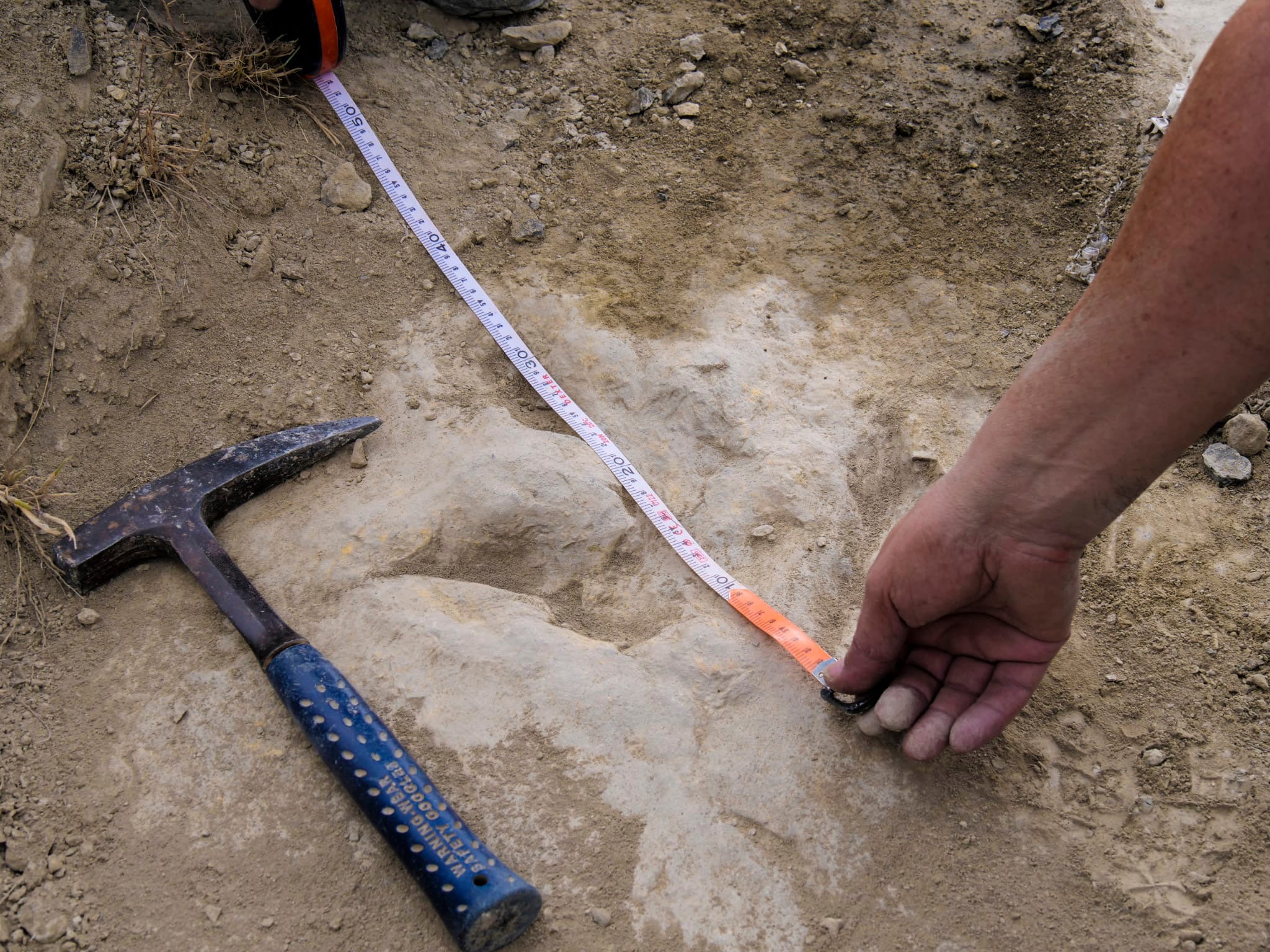Footprints show some two-legged dinosaurs were agile
Scientists say fossilized tracks from 120 million years ago show two-legged dinosaurs ran fast

Your support helps us to tell the story
From reproductive rights to climate change to Big Tech, The Independent is on the ground when the story is developing. Whether it's investigating the financials of Elon Musk's pro-Trump PAC or producing our latest documentary, 'The A Word', which shines a light on the American women fighting for reproductive rights, we know how important it is to parse out the facts from the messaging.
At such a critical moment in US history, we need reporters on the ground. Your donation allows us to keep sending journalists to speak to both sides of the story.
The Independent is trusted by Americans across the entire political spectrum. And unlike many other quality news outlets, we choose not to lock Americans out of our reporting and analysis with paywalls. We believe quality journalism should be available to everyone, paid for by those who can afford it.
Your support makes all the difference.Not all two-legged dinosaurs were like the lumbering Tyrannosaurus rex
An analysis of dinosaur tracks from 120 million years ago unearthed in Spain adds to growing evidence that these meat-eating prehistoric beasts belonging to the same group as T.rex could be highly agile.
The findings, published Thursday in Scientific Reports, reveal one of the fastest known sets of fossilized dinosaur footprints.
These tracks join the ranks of other speedy sets found in Utah and Texas one of which shows dinosaurs running at speeds over 30 mph. The Spanish footprints showed speeds of nearly 28 mph.
To calculate the running speed, scientists measured the length of the footprint and took into account the dinosaur's hip height and stride length — the distance between two consecutive footprints of the same foot.
All of the fastest known sets of prints come from a family of dinosaurs called theropods. These carnivorous dinosaurs stood on two legs and could not fly, like the famed velociraptor. The animals that created the most recent impressions were probably 5 to 6 1/2 feet tall and 13 to 16 feet long from mouth to tail, the researchers estimated.
Scientists think there may be other faster dinosaurs, but the tracks of theropods have been easier to track down.
“Behavior is something very difficult to study in dinosaurs,” said lead author Pablo Navarro-Lorbés of the University of La Rioja. “These kind of findings are very important, I think, for improving that kind of knowledge.”
Scientists typically predict dinosaur behavior through computer modeling of the creatures' movement. Physical examination of fossilized footprints confirm the results.
These are “clearly active, agile animals," said Smithsonian paleontologist Hans Sues, who had no role in the study.
___
The Associated Press Health and Science Department receives support from the Howard Hughes Medical Institute’s Department of Science Education. The AP is solely responsible for all content.
Subscribe to Independent Premium to bookmark this article
Want to bookmark your favourite articles and stories to read or reference later? Start your Independent Premium subscription today.